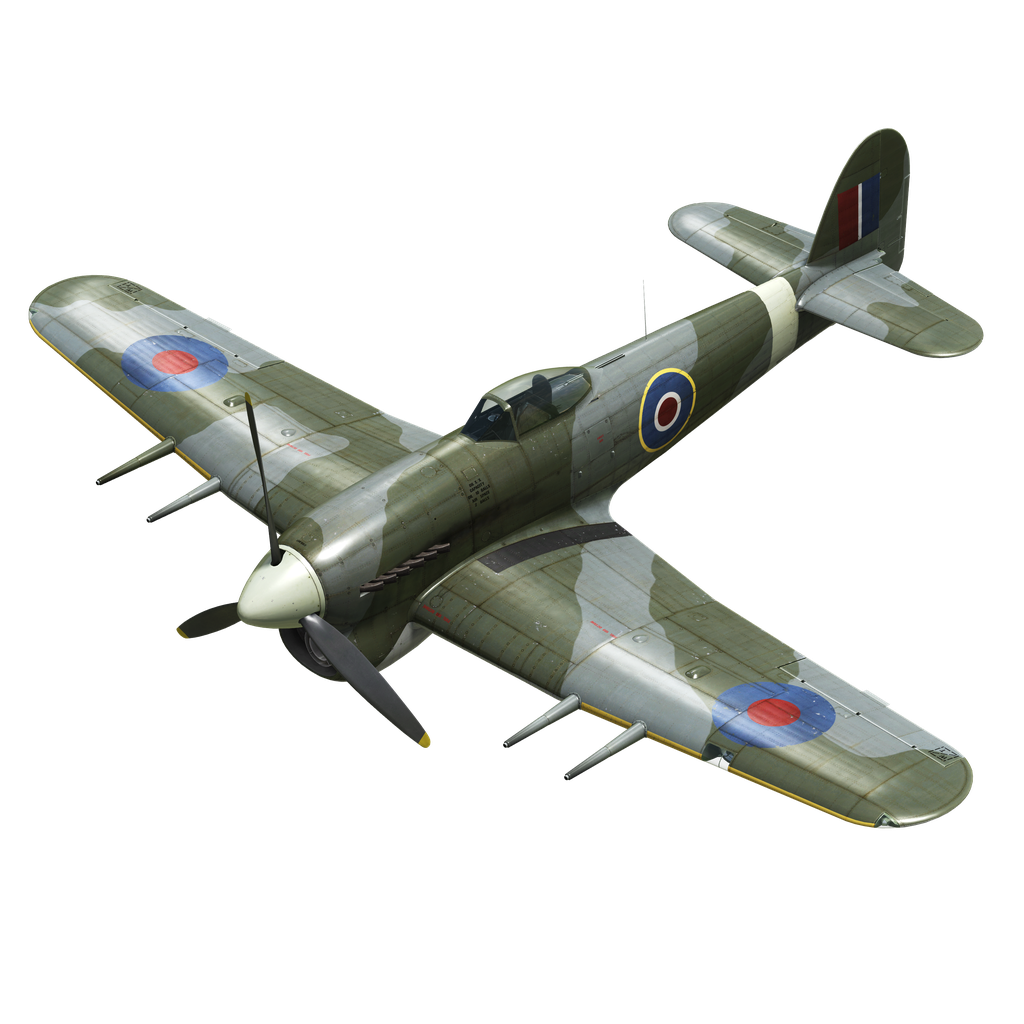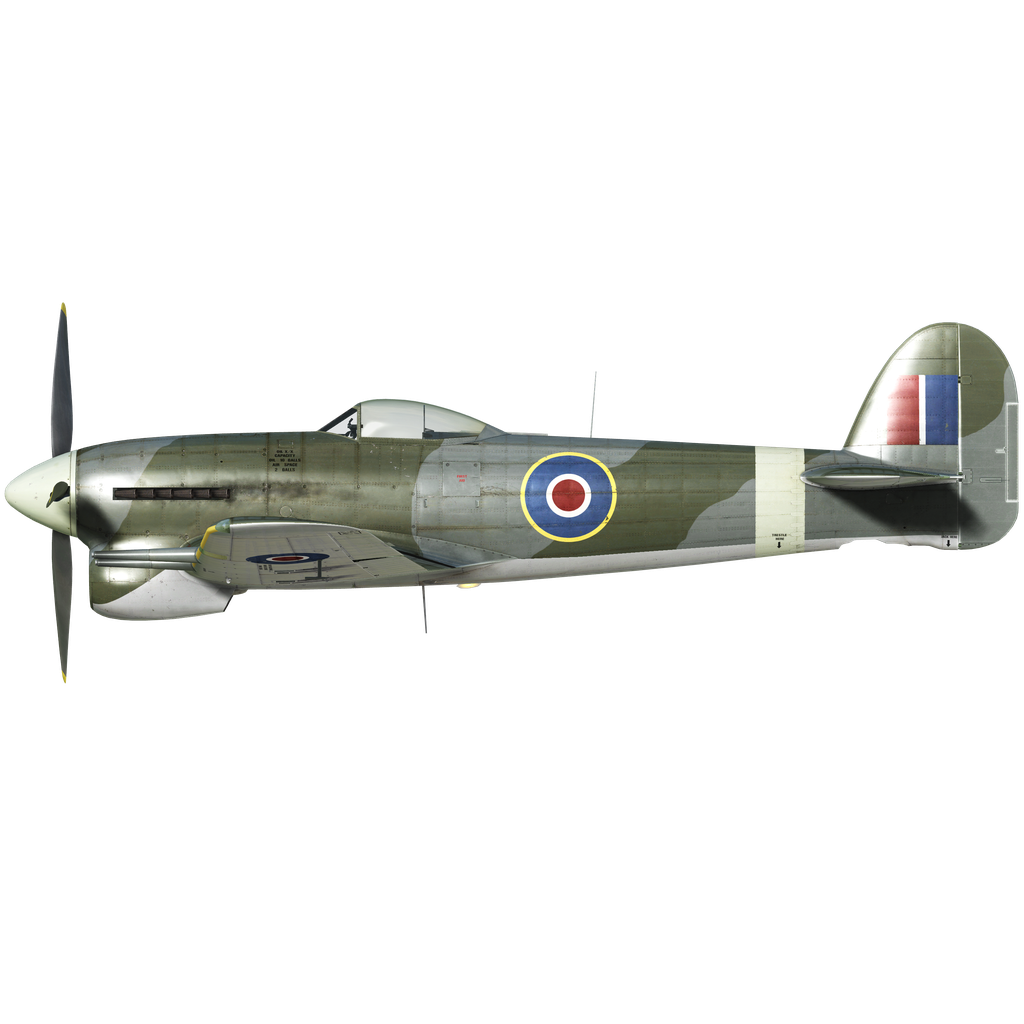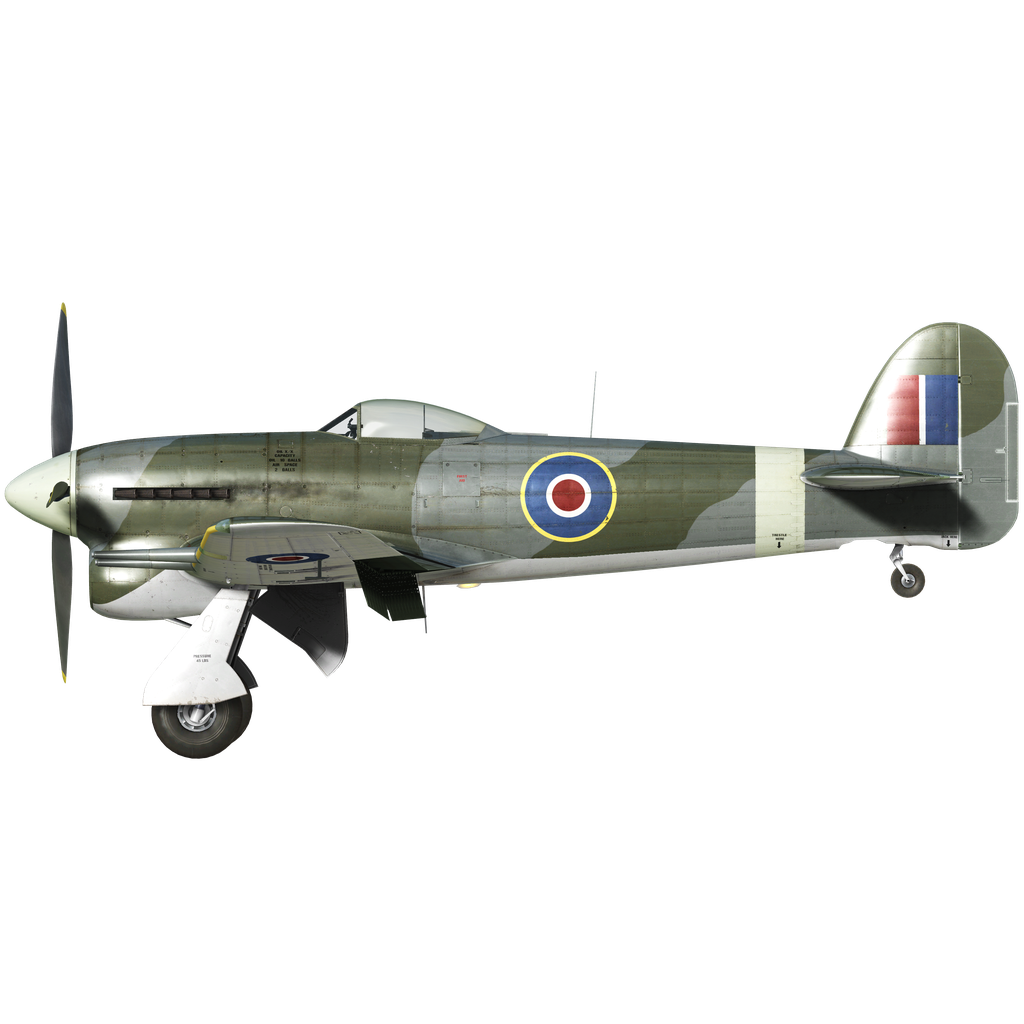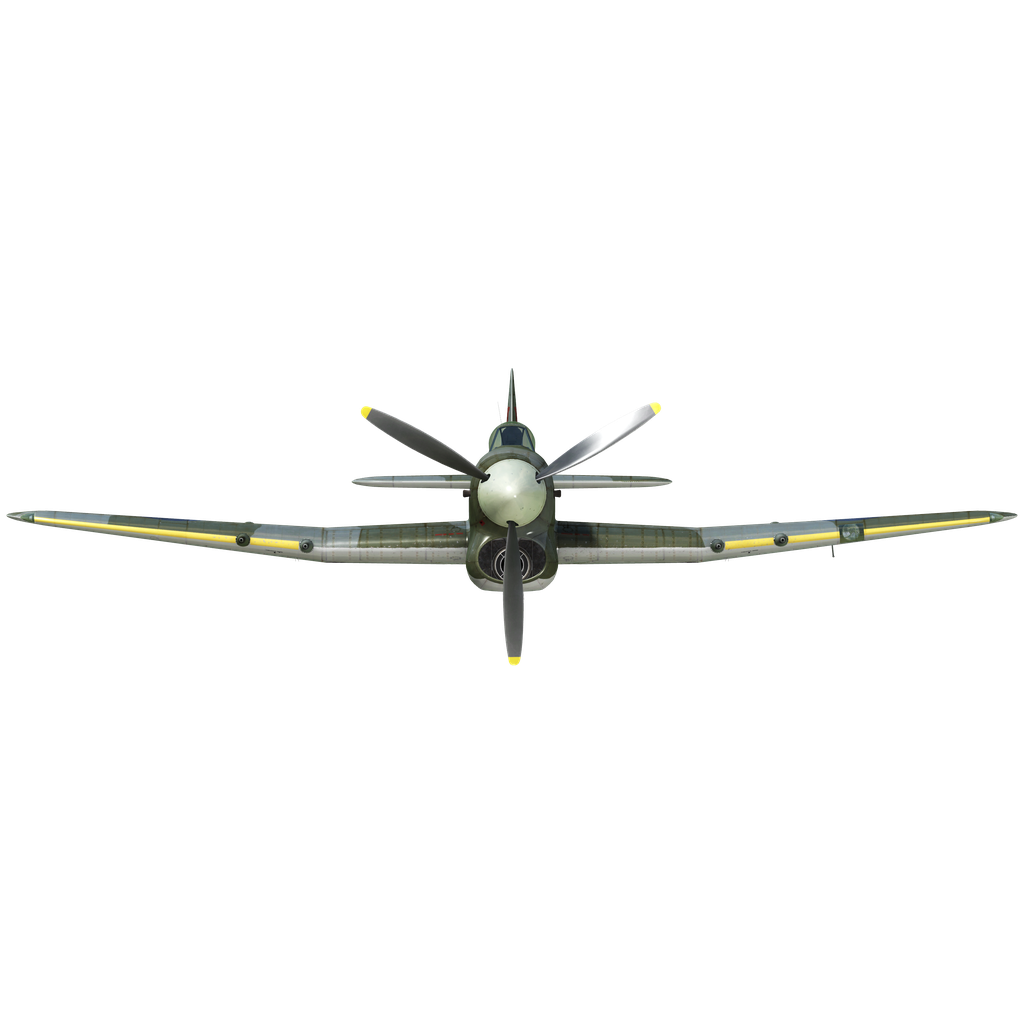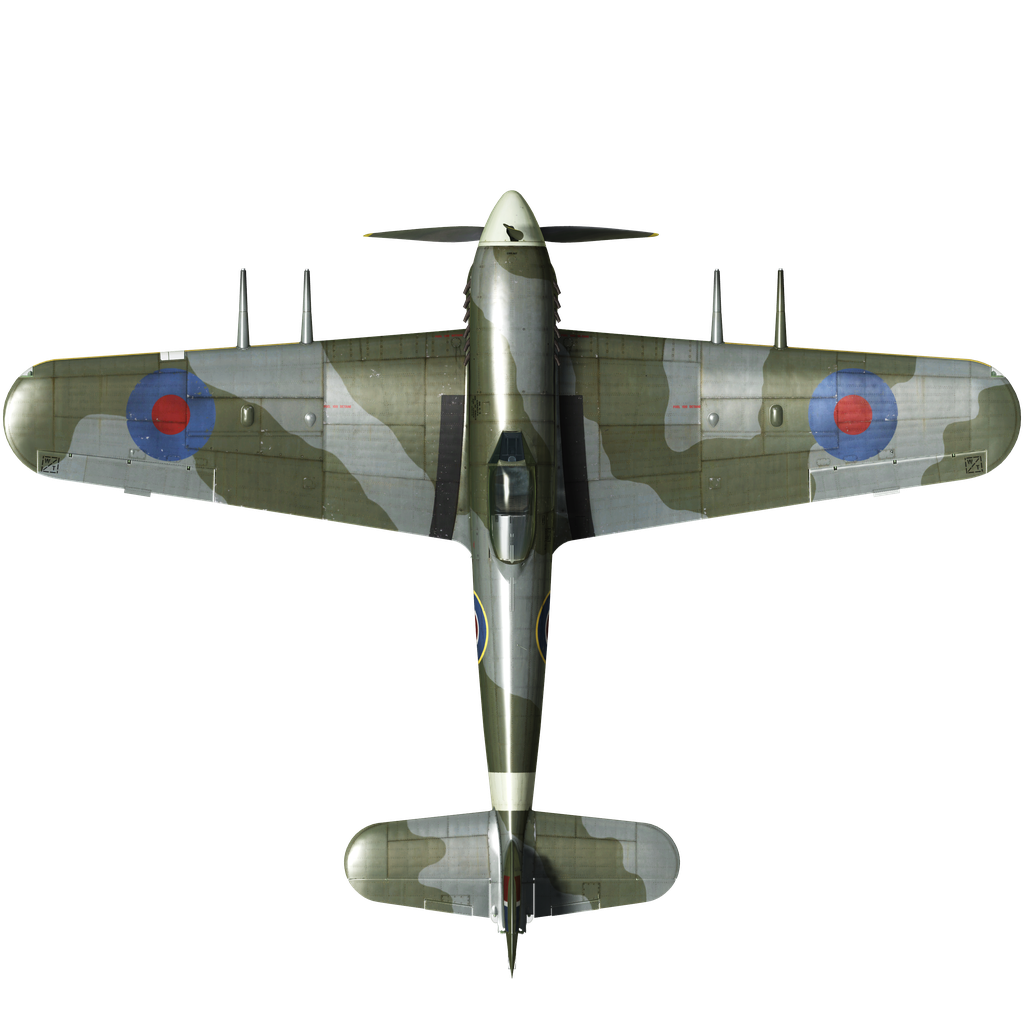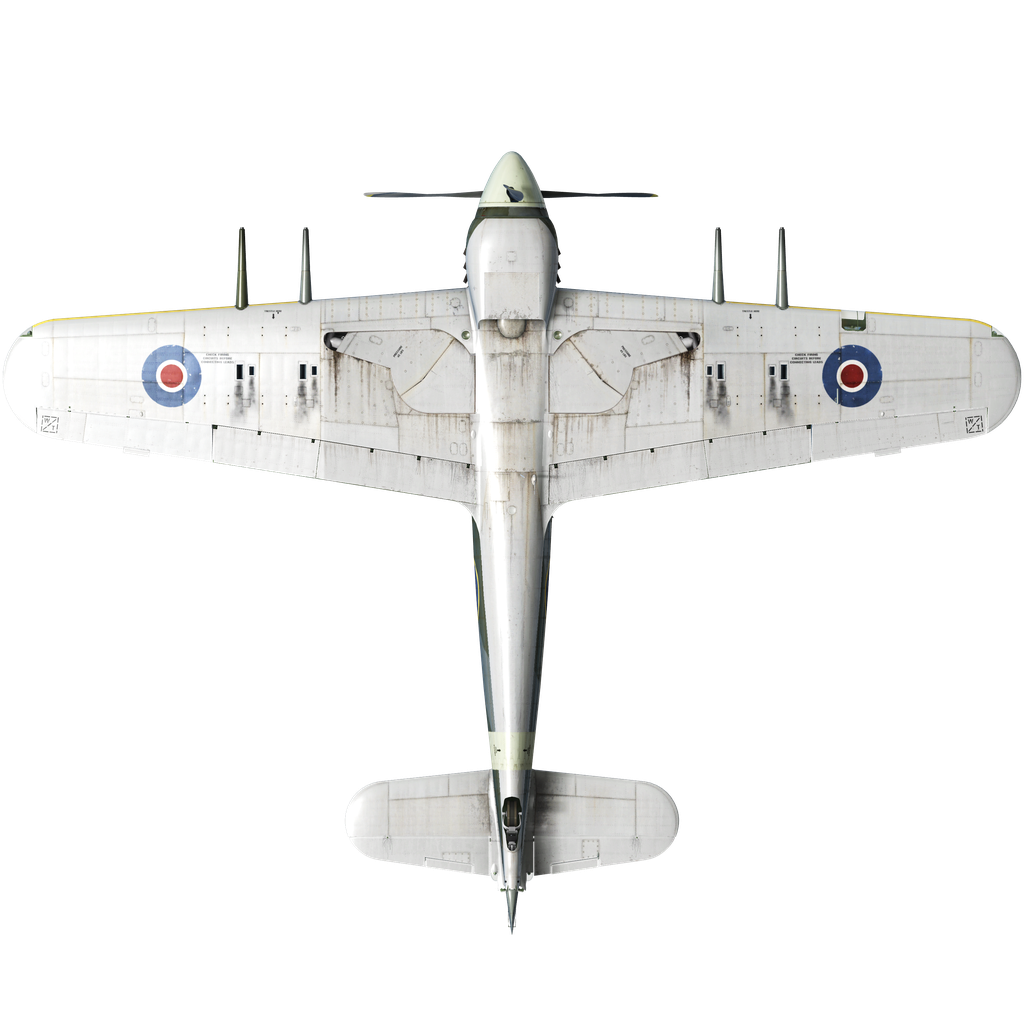Developed since 1937 as a fighter to replace the Hurricane, the Typhoon was designed at the suggestion of the Ministry of Aviation to complement existing production aircraft. It was designed as a fighter-interceptor, so the emphasis was on speed and climb rate, with maneuverability as a secondary factor. It was planned to install a promising high-performance engine and powerful weapons on the all-metal aircraft.
The aircraft retained the general layout of the Hurricane, but was larger and considerably heavier. The forward section of the fuselage had a traditional Hawker tubular load-bearing structure, while the aft section was an all-metal monocoque. The double-spar wings were enclosed in metal, which carried part of the load. The Typhoon was powered by Napier’s 24-cylinder H-shaped liquid-cooled Sabre engine, which featured valveless (sleeve) gas distribution. The first flight of the Typhoon took place on February 24, 1940, but the existing factories were busy fulfilling Lord Beaverbrook's program to produce the five most needed models: Spitfire, Hurricane, Blenheim, Whitley, and Wellington, so it was not until May 1941 that serial production began at the Gloucester factories. It soon became clear that the Typhoon was ineffective as an interceptor, which led to its conversion into a fighter-bomber.
The Typhoon was a metal monoplane with a low wing and a two-strut landing gear with a tail wheel. The wing was trapezoidal with rounded ends and consisted of two brackets, each attached to the fuselage with four bolts. Due to the placement of weapons and the large size of the wheels of the retractable landing gear, the wing profile was very thick. The fuselage consisted of four main sections: the landing gear, the center section, the empennage, and the tail. The teardrop-shaped cockpit canopy, located in the rear part of the center fuselage, consisted of a windscreen and a sliding hood.
The Sabre IIA engine developed 2200 hp at takeoff and 1735 hp at 5200 m altitude.
The armament consisted of four 20 mm Hispano cannons mounted in the wings. Two bombs weighing from 250 to 1000 lb could be hung under the wings; launch rails for eight rockets or external fuel tanks that could be combined with rockets could also be fitted.
The first production aircraft (still with machine gun armament and an early "automotive" canopy) began to be delivered to units in late 1941. During the development of the aircraft, low engine reliability and a weak tail assembly design were discovered — due to these shortcomings, 135 out of 142 aircraft delivered were lost. Later on, they were eliminated and from 1942 onwards the Typhoon began to be used in combat operations.
Its effectiveness as an interceptor proved to be limited due to its relatively low rate of climb, but its high ground speed and powerful engine led to the idea of using it as a fighter-bomber. Equipped with external racks for bombs and later for unguided rockets, the Typhoon was in service from August 1942 until the end of the war. The Typhoon proved to be very durable and could withstand a large amount of damage, although it did not have very strong armor protection. They were used for direct support of troops on the battlefield from the "cab rank" position or for attacks on transport communications, paralyzing transport in the front-line zone.
Used sources:
K. G. Munson "British Aircraft of World War II" 1962
V. Kotelnikov “Typhoon” magazine “Aviation and Cosmonautics” No. 11 2007
Materials from the site airwar.ru
